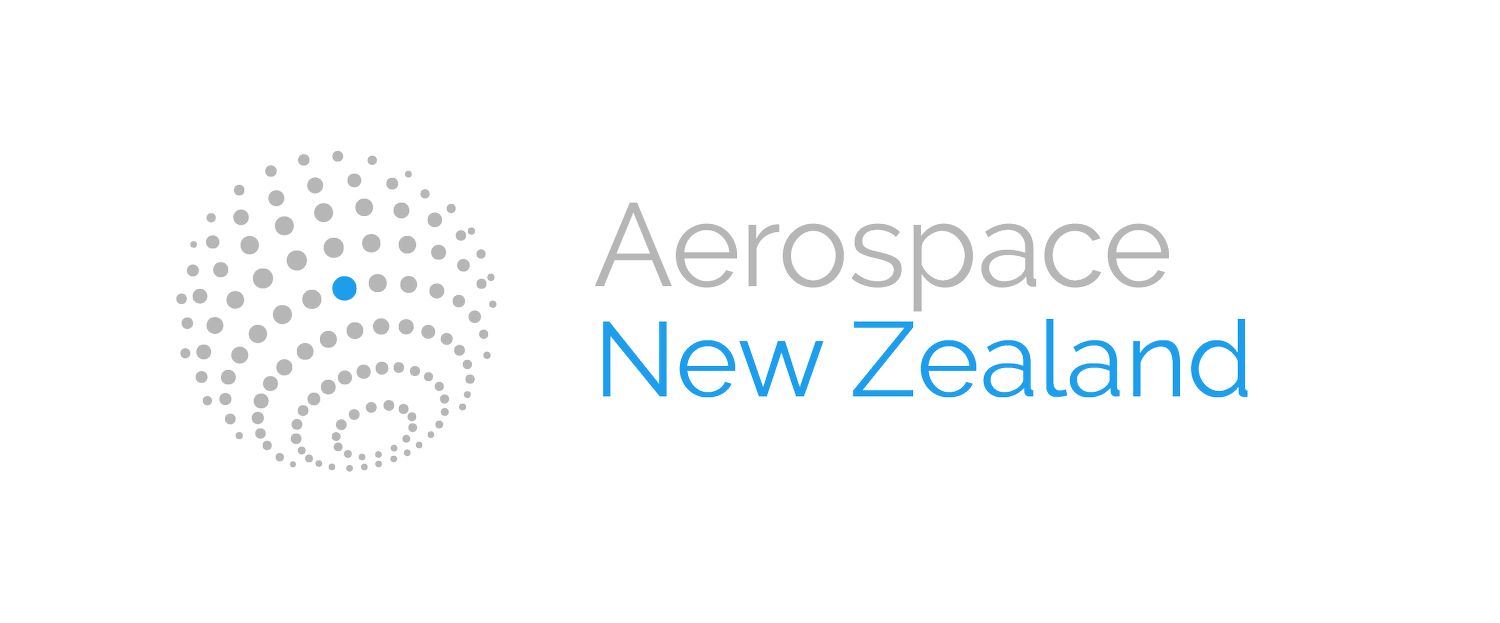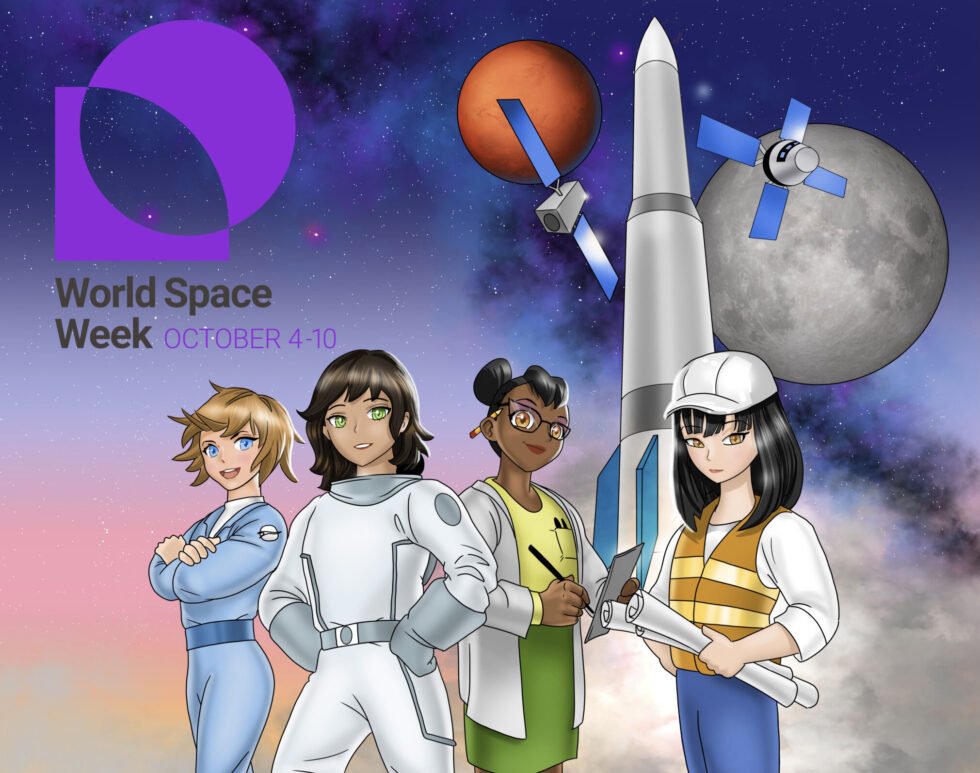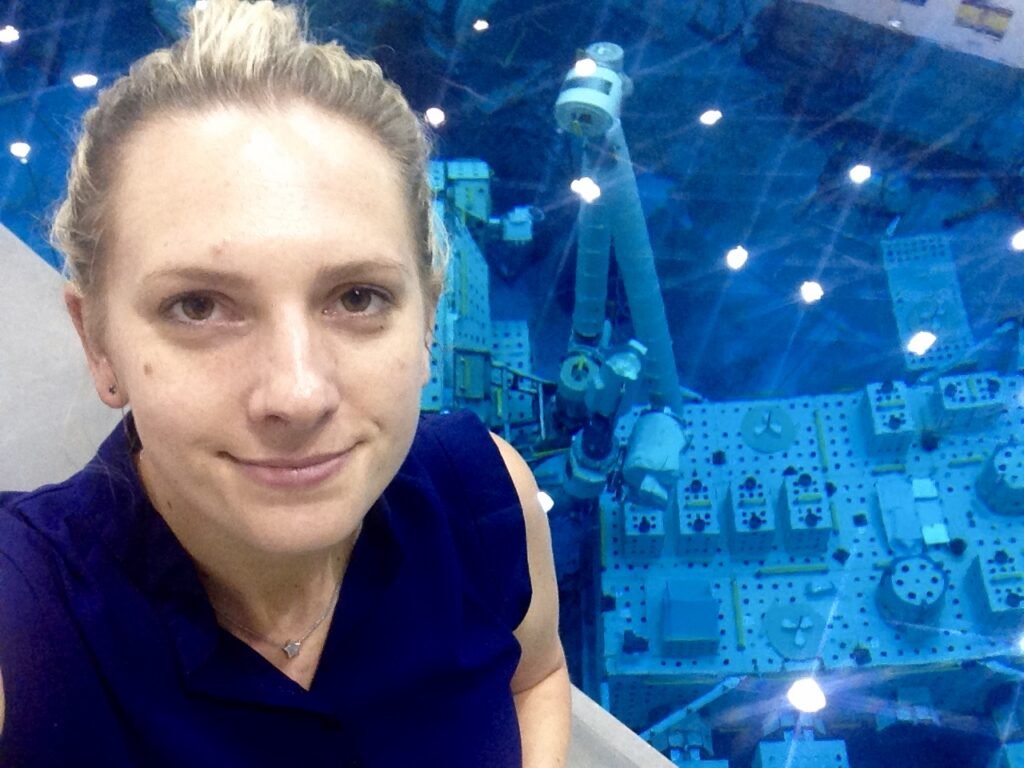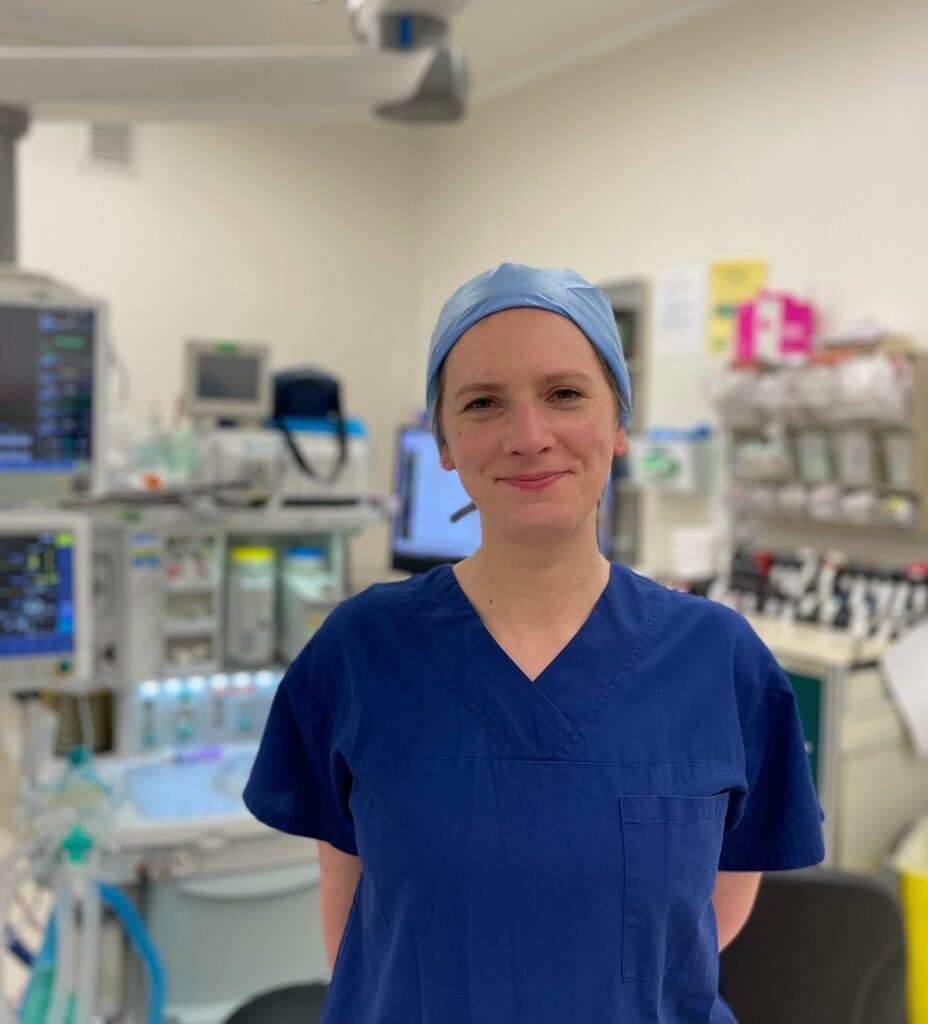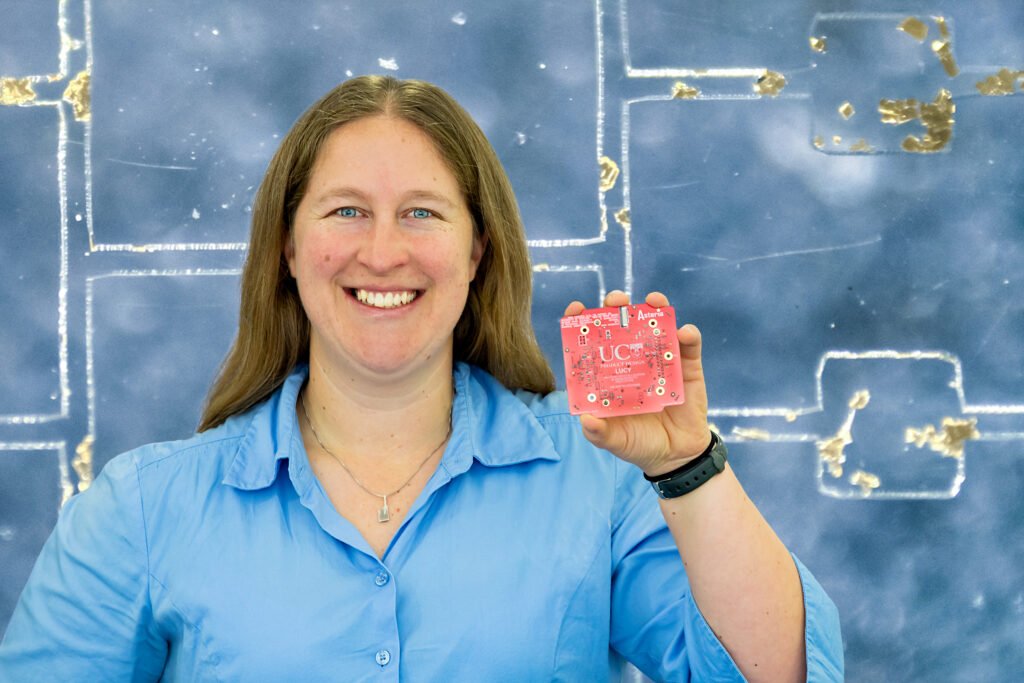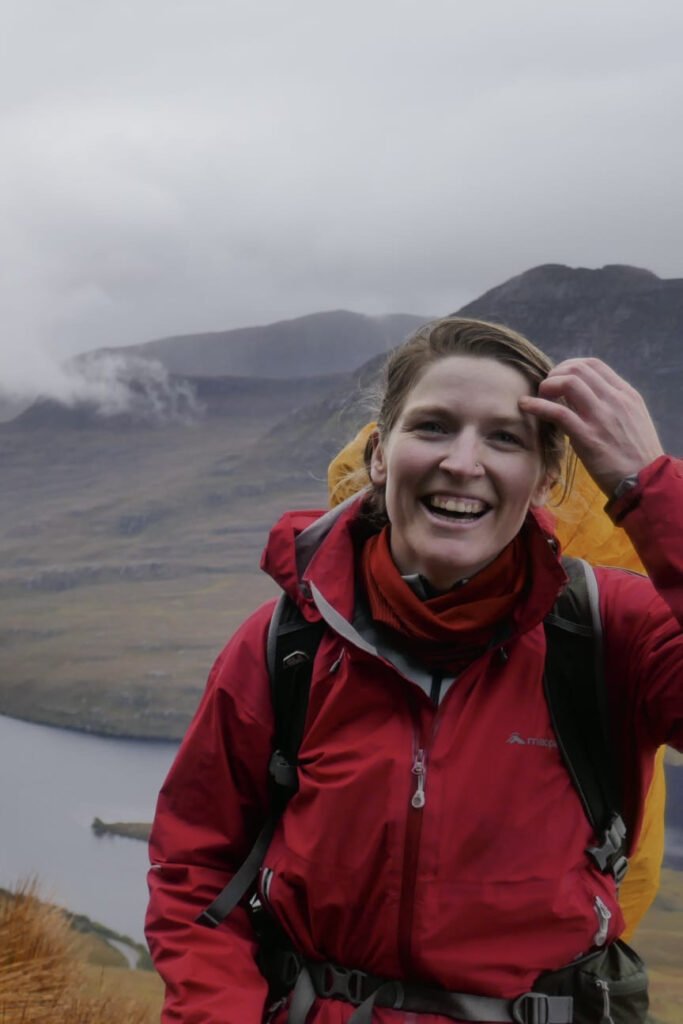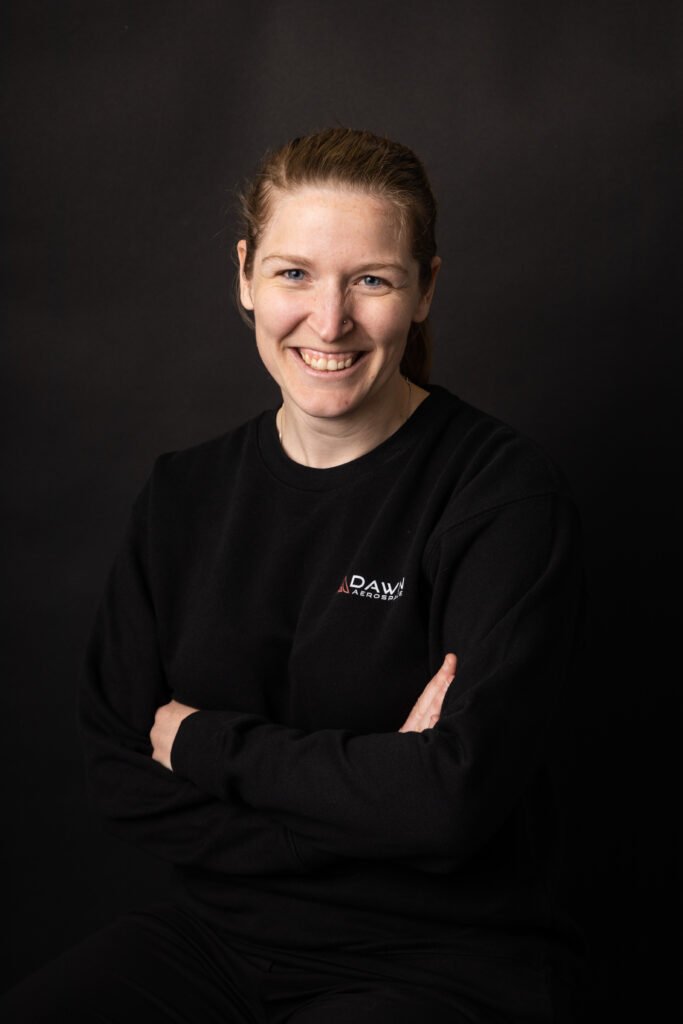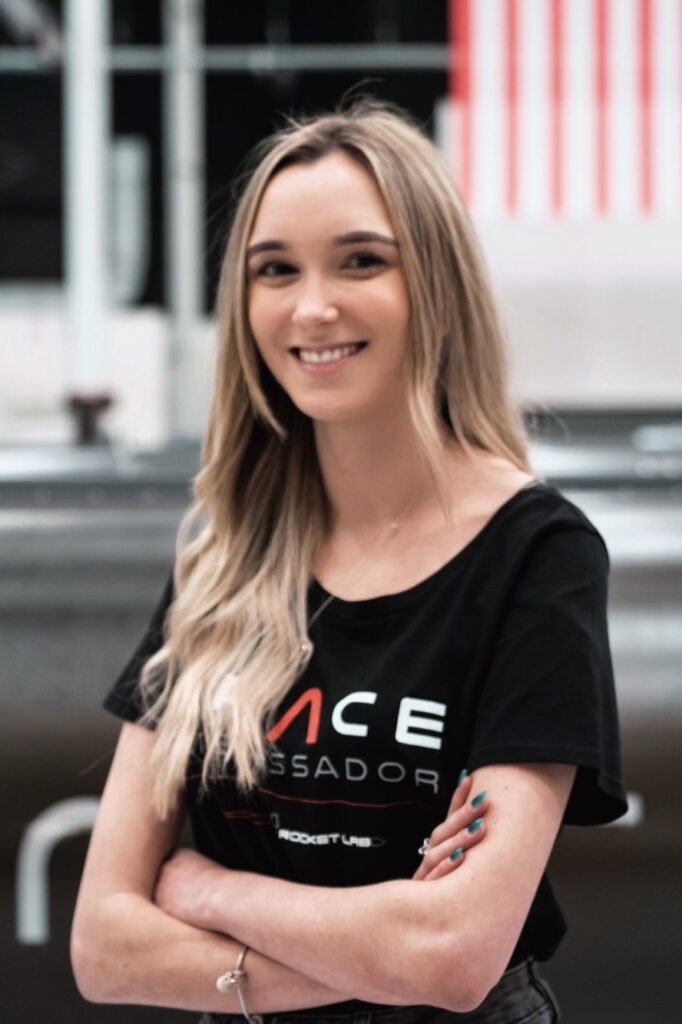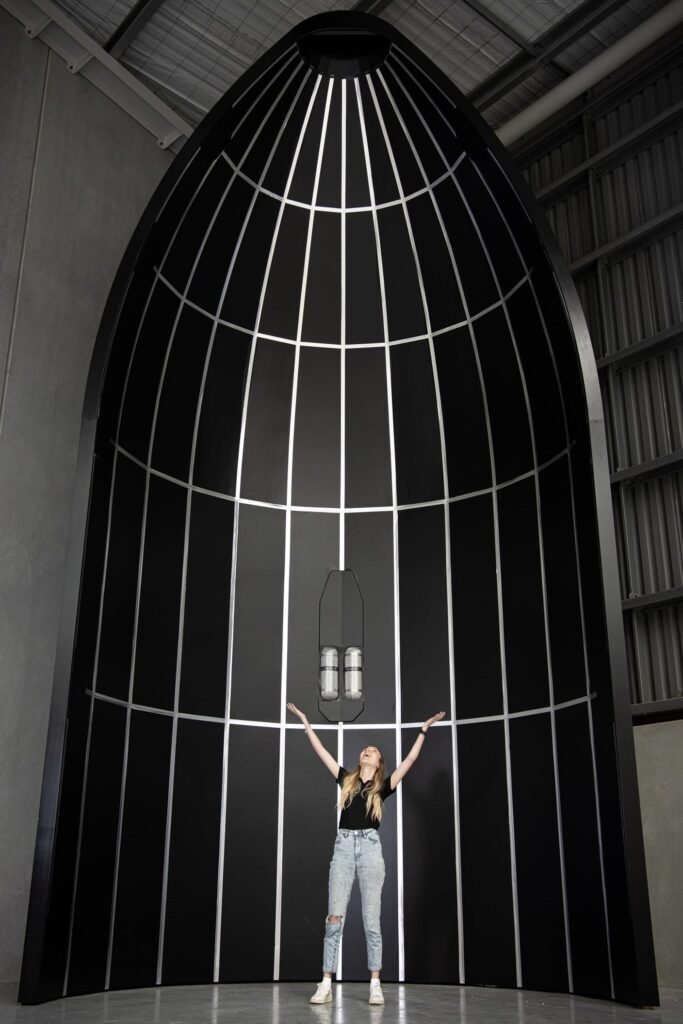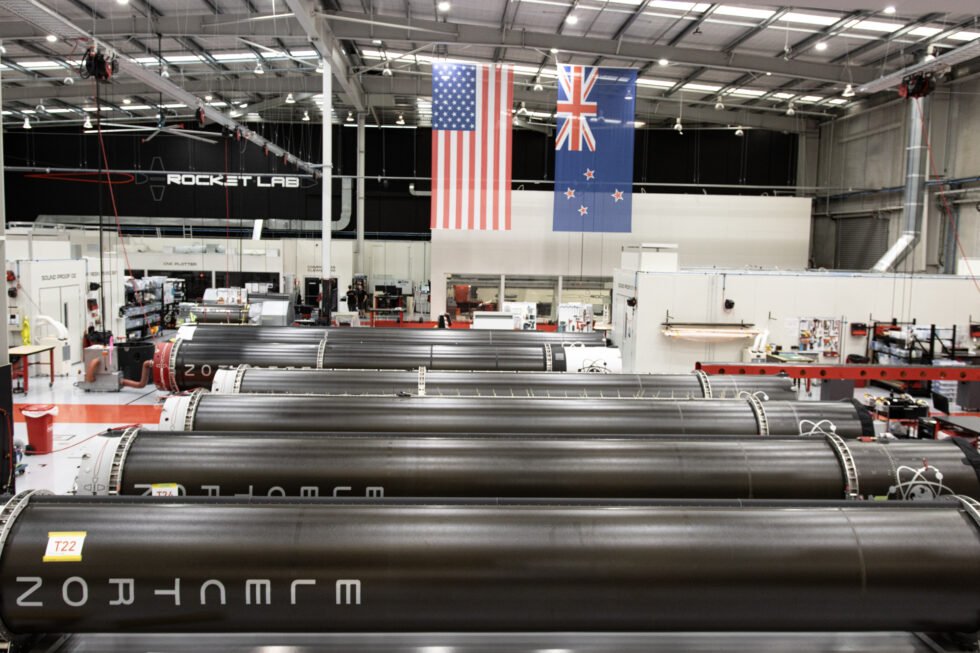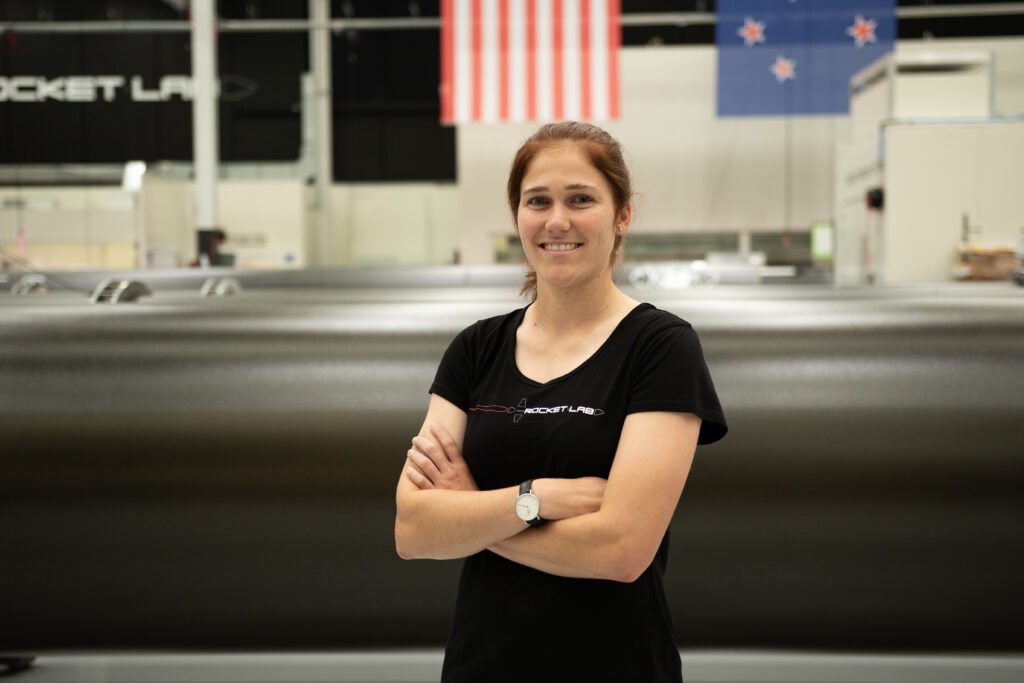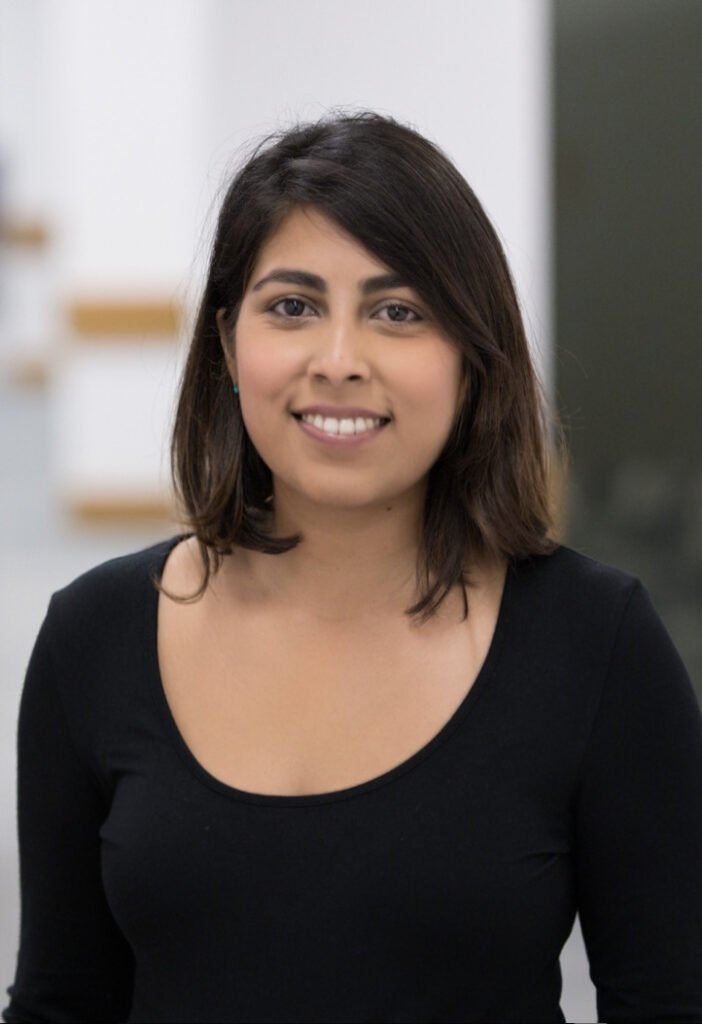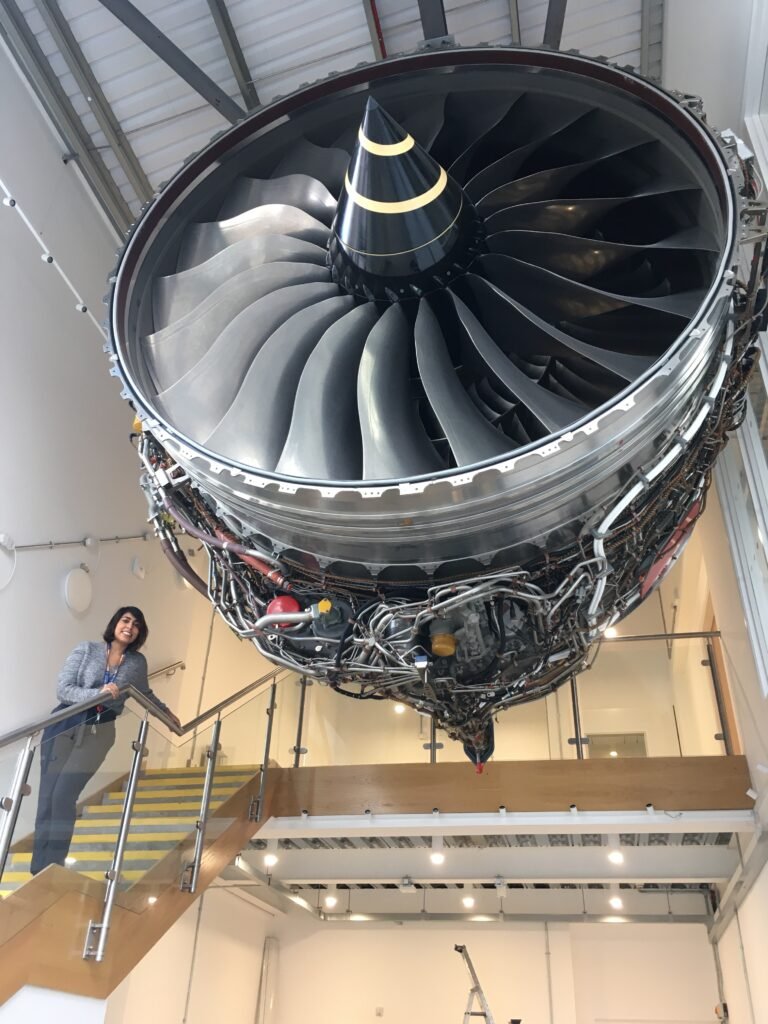New Zealand Women in Space
An annual celebration of science and technology, World Space Week (WSW) is seven days full of all things space from 4th – 10th October.
This year, the theme ‘Women in Space’ spotlights inspiring women in aerospace all around the world. We had a chat to a few of the awesome women in space right here in New Zealand below.
ABOUT WSW
Thousands of events in over 80 countries are held every year, from educational workshops and online lectures, to opportunities to observe planets through telescopes.
Events provide a chance to appreciate the awe-inspiring phenomena of the universe, and educate people about space and cosmic discoveries. Outreach events and education opportunities are held every year all over the world by space agencies, aerospace companies, schools, museums, astronomy clubs and planeteria.
Coordinated by the United Nations with the support of the World Space Week Association (WSWA), WSW aims to:
Provide unique leverage in space outreach and education
Educate people around the world about the benefits that they receive from space
Encourage greater use of space for sustainable economic development
Demonstrate public support for space programs
Excite young people about science, technology, engineering, and math
Foster international cooperation in space outreach and education
Beginning on the 4th October, the first day of WSW commemorates the launch of Sputnik 1, the first human-made satellite launched in 1957. The final day of the week marks the signing of the Treaty on Principles Governing the Activities of States in the Exploration and Peaceful Uses of Outer Space, including the Moon and Other Celestial Bodies on 10th October 1967.
WOMEN IN SPACE
A theme frames each year of WSW, and 2021 brings ‘Women in Space’ centrestage as this year’s focus. In a sector generally dominated by men, WSW aims to inspire young women to pursue studies and future careers in STEM and space industries, and celebrate the contributions and accomplishments of women in the sciences and space.
With so many inspiring and passionate women in our local space industry here in New Zealand, we’re excited to feature a few with you in WSW!
Dr Lisa Brown
General surgeon by day, and aerospace researcher by night, Dr Lisa Brown sees a bright future for aerospace in New Zealand.
What does your day-to-day look like?
I am a general surgeon completing further subspecialty training in hepatobiliary surgery. In addition to my surgical training I have also completed training and research in aerospace medicine. My current day to day work is operating and looking after patients at the Hospital and then in the evenings performing my research work in Aerospace and attending meetings with different Aerospace groups around the World that I am a member of (and spending time with my 2 year old daughter).
How and when did you begin in the aerospace sector?
I was a Kiwi girl growing up with an interest in the natural world and the physics of space. During my time at medical school I completed summer internships in Australia in the aviation field and then during my PhD I was able to really expand my interest in aerospace, taking astrophysics papers at university at the same time. I then went to The University of Oxford and was the Aerospace Medicine Research Fellow there in 2015. I then completed an internship at the German Aerospace Center/European Astronaut Center and was the first New Zealander to complete the Principles of Aviation and Space Medicine Short Course by the University of Texas in Houston and was able to learn from NASA Astronauts and attend teaching at Johnson Space Center and the Neutral Buoyancy Laboratory.
My research in the aerospace arena has continued and my involvement in international committees. I was the Resident representative for the Space Medicine Association executive committee and also sit on the Space Surgery Association executive committee. I am currently a voluntary mentor with the United Nations Women in Space program.
What are the best parts of your job? What are the best parts of working in the aerospace industry?
Like surgery, aerospace involves a lot of hard work and problem solving. The best part of being involved with aerospace medicine is the exciting new discoveries that occur consistently. Being able to conceptualise problems that might occur in microgravity to the human body and how you could counteract this to push the human body to its limits is really exciting and rewarding.
The aerospace industry enables interaction with multiple other members of the team – engineers, physicists, planetary scientists, rocket scientists – and many more. Learning from these people in their areas of expertise is fascinating.
What are some challenges you face in your work?
With multiple areas of work going on sometimes it can be difficult to fit it all in. Keeping good lists, plans and being lucky enough to have great family support makes it all possible. The physical distance from being away from the action of live human launches to space can make things challenging – so utilizing remote access to meetings, attending conferences (post Covid) and further development of the aerospace industry here in New Zealand can all help with this.
What challenges/barriers do you or those around you experience as a woman in aerospace?
Like surgery, there is a lack of female role models in aerospace, with historically most people working in this area being men. It can be hard to imagine working in an area without seeing people that you identify with working in that role. There are some pioneers out there and many more women now working in the field and it is only getting better.
How do you see the future of the aerospace sector? Specifically for women?
The future of the aerospace sector is bright and particularly in New Zealand it is rapidly expanding. With the advent of commercial space flight the opportunities to be involved with the Aerospace sector are huge. There are also so many areas in which people can become involved including space law, policy, medicine, engineering etc.
Is there anything you’d share with young people and women wanting to go into the aerospace industry, or something you wish you knew when you were starting out?
Just go for it. Don’t let anything knock you back. There are opportunities out there, you just need to keep an eye out and connect with people. Overall you do need to work hard, but if aerospace is your passion, it will never feel like work.
Dr Sarah Kessans
Dr Sarah Kessans is not your average University of Canterbury Lecturer! A biochemist researching how to grow alternative foods in space, Sarah was also a Finalist Interviewee in NASA’s Astronaut Candidate Selection Process in 2017.
What does your day-to-day look like?
I am a Lecturer in the School of Product Design at the University of Canterbury. My day-to-day is focused mainly on teaching and research. I’m not your typical “aerospace” lecturer, though. Most of my teaching and research is focussed on using plants, fungi, and bacteria to produce chemical products ranging from pharmaceuticals to agrichemicals. My research is split up between two main topics: fungal synthetic biology and technology development for research in microgravity. Although these two topics may seem completely separate, we’re working towards developing strategies for food and pharmaceutical production for future space exploration, and by combining both of my research areas, we’ll be able to develop organisms that can provide this production.
How and when did you begin in the aerospace sector?
I began in the aerospace sector back in 2017 when I was fortunate enough to get through to the Finalist Interviewee stage of NASA’s Astronaut Candidate selection process. Although I had always been fascinated by the scientific research taking place on the International Space Station, getting to meet the incredible teams that were making human space exploration possible really changed my perspectives regarding the opportunities for microgravity research. Rocket Lab launched their first Electron Rocket the night before I got the call from NASA that I was not chosen for the 2017 Astronaut Candidate class. After a deep breath and a bit of reflection, I decided that even if I wasn’t chosen as an astronaut, I could put my passion for space exploration into helping to develop Aotearoa’s budding aerospace industry. By collaborating with the UC Aerospace Club and researchers at the University of Auckland, I was able to launch some of New Zealand’s first biological experiments on rockets, and from there we began developing CubeSats for biological research in microgravity.
What are the best parts of your job?
The absolute best parts of my job are the incredible people that I get to work with, from our industry partners who bring outstanding engineering, manufacturing, and programming expertise to our teams, to my collaborators at other universities around the globe, to the students who bring such passion and innovation to the projects.
What are the best parts of working in the aerospace industry?
The amazing community that we are a part of. A lot of times research can be quite competitive and secretive, but I have found the aerospace industry, especially here in Christchurch and around New Zealand, to be very supportive and open to collaboration and partnerships.
What are some challenges you face in your work?
Although I have been very privileged to have been given opportunities to integrate myself into the community, I know that hasn’t been the case for everyone. A big challenge that we face as a sector is ensuring that a wide variety of perspectives and expertise are included in the industry.
What challenges/barriers do you or those around you experience as a woman in aerospace?
I’ve been incredibly fortunate to have some phenomenal female mentors throughout my career, but the percentage of women in the aerospace sector here in Aotearoa is still quite low, and so it’s difficult for women to find mentors who look like them. The lack of female mentors and career champions can make it very difficult for women to get a foot in the door in the industry.
How do you see the future of the aerospace sector? Specifically for women?
I see the future of the sector diversifying in a range of ways, going far beyond the realm of launch vehicles, satellites, and data collection to long-term, collaborative explorative space missions with big visions for humanity. The wider participation of a diverse community, including a more balanced percentage of women, will allow for these future innovations.
Is there anything you’d share with young people and women wanting to go into the aerospace industry, or something you wish you knew when you were starting out?
There is no substitute for just trying things. Even if something seems challenging or beyond your comfort zone, feel the fear and do it anyway. Find someone in the industry who is doing something you’re excited about and have a chat with them to find out how you could get involved.
Jennifer Blackburne
Jennifer Blackburne works with Dawn Aerospace as a mechanical engineer, and is excited about the fast-growing New Zealand aerospace industry!
What does your day-to-day look like?
I am a mechanical engineer on the propulsion team at Dawn Aerospace. Currently I am working on programming the rocket engine and preparing for the next test campaign of the engine. This involves assembling parts on the test bench, rewiring data acquisition and control systems to add new features, 3D printing the occasional part and integrating new parts onto the test bench.
How and when did you begin in the aerospace sector?
I’m relatively new to the aerospace sector having started working here in March this year. Before this I researched aeromechanical phenomena in turbomachinery working with companies like Daimler Mercedes and Cummins on their turbochargers for large trucks.
What are the best parts of your job? What are the best parts of working in the aerospace industry?
I think one of the best parts of my job is that I get to do both hands-on work in the workshop as well as more analytical work on the computer. It is awesome how quickly things are getting developed here and how problems I’m solving on the computer are integrated into the test bench and rocket engine assembly.
What are some challenges you face in your work?
One of the challenges I’m facing at the moment is managing my time correctly. I have so many jobs I want to get done in a day and, as is often the case with research and development, there are always unexpected challenges that mean it’s sometimes hard to schedule how long things will take or even to know exactly what needs to be done at the start of a job. This makes things exciting and means the job is never boring, but it also means I am sometimes disappointed I did not complete everything I wanted to do in the time I wanted to take.
What challenges/barriers do you or those around you experience as a woman in aerospace?
I think I’m fortunate to be part of a company where I’m respected for my ideas and skills. However, in some places I have had problems where I’m often underestimated as a female, and it takes a while for me to gain respect from my peers and for my ideas to be considered (even if they are good ideas!).
How do you see the future of the aerospace sector? Specifically for women?
In New Zealand the aerospace sector is expanding. This means there are more jobs and there is more exciting stuff happening! I think there is a big push to get more women in the field and normalise women and girls choosing careers in aerospace. I’m hoping this will start showing up with more women working in the industry.
Is there anything you’d share with young people and women wanting to go into the aerospace industry, or something you wish you knew when you were starting out?
As someone that has come from a different industry to this one, I would say it’s never too late to get into aerospace. Especially in New Zealand where the industry is developing rapidly, I think it is a really great place to be and you don’t have to have studied rockets or planes for your whole life to be here, you just have to be enthusiastic and ready to learn and solve problems.
Lara Collier
A passionate young engineer, Lara Collier is now working as a junior software engineer at Rocket lab after interning for a summer.
What does your day-to-day look like?
I’m a junior software engineer for the operational data team at Rocket Lab. I help to build software solutions for data insight – which is the key to all good rocket science! My day-to-day is talking to key engineering stakeholders across the company so that we can build tooling suitable for everyone’s needs. We’re only a small team with a big goal, and so teamwork is absolutely critical to do my job well.
Most of the day you’ll catch me coding up a storm, planning our work as a team, or reaching out to engineers to help solve some hard problems! Rocket Lab is also just a little bit unique in that our day-to-day can also involve watching a rocket launch or an engine hot fire.
How and when did you begin in the aerospace sector?
I was in the aerospace sector before I even graduated! I was super fortunate to have been able to intern for Rocket Lab for a summer, and then continue on full time as a junior. It couldn’t have worked out any better for me!
Space was a dream of mine since I was a kid – basically just because I had a slow-burning curiosity for the unknown. I really wanted to be on the frontier of science, and space was my answer to that. Little did I know that my home country NZ was materialising a space ecosystem just in time for me to join it, and it’s only going to get bigger.
What are the best parts of your job? What are the best parts of working in the aerospace industry?
There is nothing better than watching a rocket take off next to all the super clever engineers that built it – with blood, sweat, and tears! I always say, Rocket Lab is super unique in that every single member of the RL team has one goal – and that is to send the rocket to space and deliver the payload to orbit. So when it comes down to it, everyone will do anything they can to help others achieve that goal. That aspect of our culture is so abundantly clear when hundreds of us cram in behind mission control to watch the launch in both periods of utter silence and roaring cheers.
The best part about working in the aerospace industry in general is having the opportunity to learn from the smartest people you’ll probably ever meet. Every day I’m inspired by people’s crazy life and career experiences, deep technical knowledge, and can-do attitude.
What are some challenges you face in your work?
What often comes with being surrounded by super smart people is the feeling that you might not be deserving of your spot! This is especially the case when you are a woman in a male-dominated field, and I have (and still do, to an extent!) feel challenged by it. Something that’s helped a huge amount has been focussing on my own growth and trying not to compare myself to others. You are the only person on your journey, and it’s important to reflect on how much you’ve learnt and how far you’ve come.
What challenges/barriers do you or those around you experience as a woman in aerospace?
I think it can be difficult for women to come to the realisation that when they join an aerospace company or group, they may be only one of a few (or maybe even the only) women to be in a team. I know for me, it was daunting when I knew that I may struggle to find that support or a role model to learn from.
I think as we continue to push for industry and other groups to engage in active promotion of women in their cohort, as well as creating a professional environment for women to thrive, this will greatly reduce the burden of having to be the first to break through that wall. Rocket and space science is hard enough – we need to make the entry for commonly marginalised groups into these fields the easy part.
How do you see the future of the aerospace sector? Specifically for women?
The future of aerospace is diversity! Diverse backgrounds and experiences are crucial to foster innovation, and I think people forget that. Aerospace seems like an objective science to most – but at the end of the day science is done by humans, and the best engineering decisions you can make are ones made by a diverse bunch of clever people. Amplifying the voices of women who have been in the industry for decades, as well as those that are just starting out, is super important to tell girls that there’s a place for them in aerospace. I think right now is an amazing chapter in aerospace specifically in New Zealand, and we need to further it by prioritising getting women of all backgrounds into the industry.
Is there anything you’d share with young people and women wanting to go into the aerospace industry, or something you wish you knew when you were starting out?
Nothing can truly take away that drive and passion you have. While it might feel like you’re losing that spark sometimes, what you should remember is that you’re paving the way for future generations of girls to smash it in aerospace. Sometimes when I’m having a hard day, I think about the dozens of messages I’ve received from young girls who tell me that they didn’t know any women in aerospace until now! And you will be that inspiration for someone too, whether that be a girl you’ve never met or a young member of your family watching you do something they thought wasn’t possible!
As for something I wish I knew – I wish I could tell myself that it’s okay not to know everything, uni/school doesn’t prepare you for everything a job might throw at you, and you will build your knowledge and confidence in what you do one day at a time.
Sarah Blyde
After starting her career in Western Australia, Sarah Blyde completed a masters degree in space studies in France, before returning to New Zealand where she now works at Rocket Lab as a project engineer.
What does your day-to-day look like?
I am a project engineer in the Configuration Management team at Rocket Lab. We are responsible for managing engineering changes on the electron launch vehicle from an initial concept through to eventually flying to space. We spend a lot of time working with design and manufacturing engineers to ensure each rocket is designed and built to perfection.
How and when did you begin in the aerospace sector?
I started my career working as a petroleum engineer in Western Australia after graduating from the University of Auckland. It was a good job but I was much more fascinated by everything that was going on in the space sector. So after a few years there, I went off to France to do a masters degree in space studies. The pandemic kicked off halfway through that so I decided to come home to New Zealand where I finished my studies remotely before starting work at Rocket Lab in 2020.
What are the best parts of your job? What are the best parts of working in the aerospace industry?
There are so many good parts! I love working with people who are so passionate about what they do. There’s always a new challenge around the corner and we’re constantly improving the way we do things. I also really enjoy being able to inspire the younger generation through my work as a Rocket Lab Space Ambassador. And of course, launch days are always a blast – the sound of lift off never gets old!
What are some challenges you face in your work?
There’s always something new to learn, deadlines to meet, or problems to solve. It’s easy to just get caught up in it all but it’s important to step back every once in a while, look at all the beautiful Electron rockets we have lined up in the factory and just say “wow”.
What challenges/barriers do you or those around you experience as a woman in aerospace?
When it comes to STEM in general, I think we definitely need more female role models to look up to in senior engineering and leadership roles. It’s slowly getting better but there’s always more we can do to support women in STEM careers.
How do you see the future of the aerospace sector? Specifically for women?
I think it’s super exciting! There is so much momentum in the industry right now and I’m so glad to be part of it all. In the future, I’d hope that more women want to join the industry because they can see how fun and rewarding it can be as a career.
Is there anything you’d share with young people and women wanting to go into the aerospace industry, or something you wish you knew when you were starting out?
It’s for everyone! It doesn’t matter what your background is, the industry needs all sorts of people to contribute to what we do. I always assumed you needed an aerospace degree to work in the industry but you might be surprised how relevant skills from other disciplines or industries are. Your experience could actually be what we’re looking for! There are so many exciting opportunities in the industry and it’s only going to keep growing in the future.
Jessica Tucker
With almost twenty years experience in aerospace, Jessica Tucker is now a senior associate in systems engineering at Beca Applied Technologies.
What does your day-to-day look like?
I’m a senior associate in systems engineering at Beca Applied Technologies. We’re a consultancy, so we do a broad variety of work – including a lot of high-assurance systems and software engineering in defence and aerospace (especially military aviation). I’m currently a project manager for an aerospace software development project. The software we’re working on will enable critical safety features of the vehicle that will host it. Lots of process assurance is baked into our efforts – to determine whether the software operates just as intended when intended. In addition to project management, I chip in my perspective as an assurance engineer on this project: helping the team demonstrate confidence in our software ahead of an independent V&V assessment. (In that capacity, I’m borrowing heavily from my previous job, where I was a government evaluator for other high-assurance systems developed by US government space organisations.)
How and when did you begin in the aerospace sector?
I came into aerospace somewhat by accident in the summer of 2001. I interned at a defence aerospace research and development organisation in California while I was in graduate school. The role had me performing scanning electron microscopy and materials assessments for microelectronics failure analysis.
Microelectronics in space systems – especially satellites – often need to be developed to more stringent requirements for reliability, which means manufacturing processes need to be tightly controlled. My job was to help figure out what went wrong when something had failed, or what kind of mission and system risks were posed by the loss of process control in manufacturing. The work I played a small role in helping the Delta II and Delta IV launch vehicles – including the inaugural launch of the Delta IV Heavy – as well as Gravity Probe B, novel cubesat science missions, and other defence-focused space missions.
From there, I moved into a role where I was embedded with the Air Force in the GPS program, supporting the evaluation and certification of security designs for user equipment. This was at the time the new modernized GPS signals were being deployed in the space segment on GPS IIR-M and GPS IIF vehicles and the very first GPS IIIs. I developed a real appreciation for systems engineering and the challenges of enterprise integration of new capabilities – especially in systems that were so visible and critical to both military and civilian users around the world.
My last role before coming to Beca Applied Technologies was one focused on space science and technology research and outreach. I helped problem solvers (scientists, engineers, and technologists) and problem owners (chiefly US government space organisations) articulate the problems that needed solving and understand technology solutions that were available to solve them.
What are the best parts of your job? What are the best parts of working in the aerospace industry?
There are two extremely cool things about what I do. The first is the gratification of knowing that the work I’ve done, the energy I’ve spent thinking about and helping a team solve a really tough problem, has made a difference. Leaving things better than they were when I found them feels really good. The second is the awesome teams of people I get to work beside (clients and colleagues alike). Working with clever people to do awesome things that make a difference… it doesn’t get better than that!
What are some challenges you face in your work?
Diversity is a potent and powerful enabler for solving complex problems and for driving innovation to do things differently. And diverse groups of people tend to see and approach problems from very different perspectives, perspectives shaped by our life experiences. The strongest and most effective teams I ever led were built from individuals who could bring their whole selves to the problem-solving table. I’m really pleased to see more women, indigenous peoples, and other under-represented groups be included in the aerospace community and I look forward to working with others to shape the future in that regard.
What challenges/barriers do you or those around you experience as a woman in aerospace?
Visibility of aerospace career opportunities is a barrier to entry for anyone, especially women. There’s a kernel of truth in that adage, “You can’t be what you don’t see.” Outreach and awareness is important to planting the seed of a future in the aerospace industry. But that’s just a part of the picture: every under-represented group also needs allies from within a community to help advocate for equality, for recognition, and for opportunities. We have a way to go, but the progressiveness and enthusiasm I see in the growing aerospace community in New Zealand inspires me!
How do you see the future of the aerospace sector? Specifically for women?
I think the future of aerospace is bright. Advances in technology are going to enable science fiction to become science fact. And the more women who come to contribute, the faster we’ll get to that future together.
Is there anything you’d share with young people and women wanting to go into the aerospace industry, or something you wish you knew when you were starting out?
Go for it! There are people in the industry ready to cheer you on, ready to support and encourage you, and ready to see what you can do! There are plenty of hard problems that need solving, plenty of good teams that need you and your talents. Come join us and let’s see just how far we can fare together!
Dr Priyanka Dhopade
From growing up in Canada dreaming of becoming an astronaut, Priyanka Dhopade is now a lecturer in thermofluids at the University of Auckland.
What does your day-to-day look like?
I am now a lecturer in thermofluids at the University of Auckland. My day today involves a diverse set of activities, for instance, seeding new research project ideas , lecturing in thermodynamics and fluid mechanics for undergraduate students, and contributing to equity initiatives at the Faculty of Engineering.
What made you decide to be an engineer?
I was always interested in and good at maths and science, so was inclined towards a scientific discipline from a young age. My father is a Mechanical Engineer, so I was exposed to the field from early on. Although my father specialises in pneumatic systems, which didn’t excite me in the least, and I thought that’s what all engineers do. In primary school, we learned about Roberta Bondar, the first Canadian woman in space and that’s where I became interested in aerospace engineering. Initially, I wanted to be an astronaut, but I thought aerospace engineering was a good backup plan in case the former didn’t work out! The support and encouragement from my parents and teachers was crucial towards making this decision.
What do you enjoy most about your work?
I enjoy the fact that there is significant overlap between the aviation and space sectors in terms of skill sets, priorities and environmental considerations. Previously, I was working on jet engine research at the University of Oxford. I thought it would be much harder to transition from an aviation background to a space career, but it has been relatively smooth and really fun!
What challenges do you face in your work? Anything specifically as a woman in aerospace?
The challenges are related to being new to Aotearoa NZ. I have been developing relationships and collaborations from scratch, particularly through multiple lockdowns, which has been a bit challenging. But despite that, I have managed to meet some incredibly kind and smart people, all passionate about Aotearoa’s space sector.
As a woman in engineering, have you ever had to overcome any gender barriers? What do you think is the reason for these barriers existing?
I have been fortunate enough to have never experienced any overt barriers due to my gender, but I do know they exist. The types of barriers I have faced have been subtler, like my idea not being taken seriously in a meeting until a male colleague repeats it. You can see how that would be difficult to challenge without seeming like a victim, how that could make one more reluctant to speak up and how that reinforces imposter syndrome.
These subtle barriers exist because of people’s outdated perceptions of gender (often backed by dubious science, like quoted in the Google employee’s controversial memo). They also exist because of people’s outdated perceptions of what an engineer looks like, sounds like and what an engineer does. I think men and women internalise these stereotypes equally.
How do you see the future of the aerospace sector? Specifically for women?
Exciting! Just in the last 10 years, the space sector has changed dramatically. Who knows where it will be in another 10-20 years? I think women will have a key role to play in terms of progressing the aerospace sector, whether that’s through engineering, science, law or policy. Ultimately, the benefits of space are for everyone so the workforce of the sector should reflect that through gender, ethnicity, etc.
Is there anything else new since that interview you’d share with young people and women wanting to go into the aerospace industry?
Consider joining the newly formed Women in Space Aotearoa New Zealand network! We hope to have plenty of opportunities for networking, mentoring and building a community across the country of diverse women interested in space.
